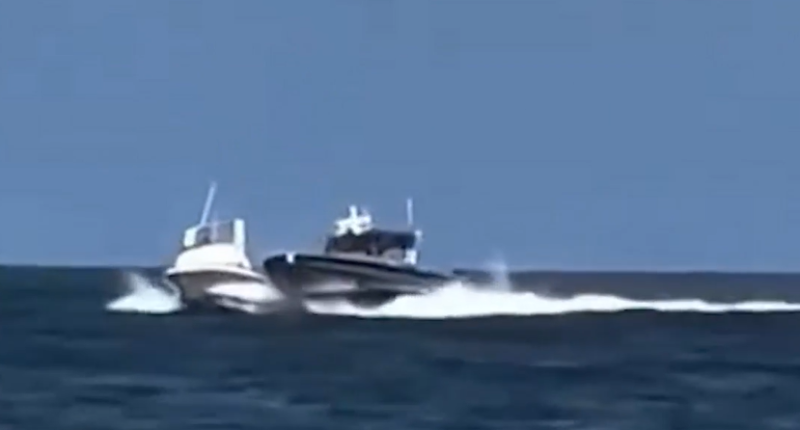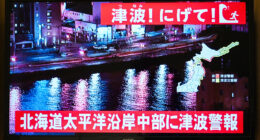Share this @internewscast.com

Editor’s Note: The video in this story has been updated to more accurately reflect the nature of actions taken by Customs and Border Patrol.
() Border agents trying to stop smugglers from reaching the U.S. are now facing high-stakes situations at sea as the southern border tightens.
The number of smugglers attempting to reach the U.S. by sea has been picking up, nearly doubling on the eastern side of the country.
With the southern border essentially locked down, smugglers are retaking old routes, and Customs and Border Protection’s air and marine operations interdiction agents are working together to force smugglers to stop.
In a recent incident, marine interdiction agents were forced to disable a vessel after it blew past the Mexican navy and U.S. Coast Guard, refusing to stop.
One of the agents shot out the engines of the boat, which were actually very small and located below the water.
The agent who carried out the seemingly impossible task was on board during a ridealong and said it was actually his first time shooting out an engine.
“We have basically the same authorities as Border Patrol,” said Brandon Tucker, who is with the Air and Marine branch of Customs and Border Protection. “We just kind of translate them to the maritime environment. But we’re locked arms. You’re not getting by us, and we leverage our partnerships for when we want to do a significant prosecution of a smuggler with enhancements.”
In the past several years, 350 vessels have been stopped by force, the engines shot out by law enforcement after boat operators refused to stop.
The unit was riding with has already had 17 engine shootouts this year, the deputy director saying they are on pace to break a record.
Often, boat or jet ski operators will dump people or drugs into the water when spotted to avoid smuggling charges. They’ll even blend in with the migrants when agents approach, but reconnaissance tools like cameras help identify the smugglers.
There’s about a 25% chance that agents are going to have to shoot out an engine during the day if a vessel shows up, and at night, that probability doubles to about 50%, as smugglers think they have a better shot at getting away under the cover of darkness.
But agents don’t just start shooting. There is a process to ensure everyone is safe.
It’s called the small boat interception protocol, and agents will first approach the vessel and order it to stop.
If they don’t, warning shots will be fired. If the operator still won’t stop, the engines are shot out and the vessel is disabled.
“These guys don’t know what they’re running into until they’re alongside, and they have to put on the law enforcement hat when it’s drug smugglers, where you’ve got M4s trained on them, ready to take care of business,” said Tucker. “Then in a moment, you’re like okay, it’s migrants. Let’s put that down and let’s make sure that situation is safe.”
In all 350 engine shootouts they have had, zero injuries have been reported, something the deputy director is attributing to the training and professionalism of the agents.











